
'Middle Earth': New Zealand's Fantasy Landscape (Photos)
Middle Earth at the bottom of the Earth
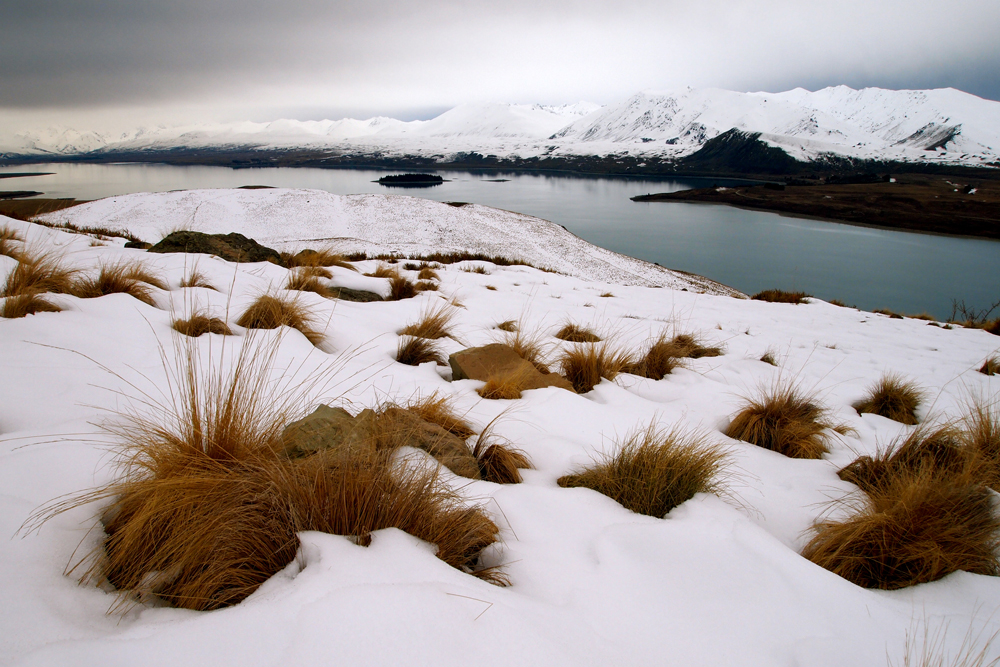
My breath condenses in the cold winter air. Gazing over the still, dark waters of Lake Tekapo is to feel transported to the edge of the known world: Here be dragons. Indeed, dragons, dwarves, and giant eagles take little imagination to be conjured up from these snowy ranges shrouded in cloud.
When J.R.R Tolkien created the mythical land of Middle Earth for his much beloved books, he had no idea that the landscapes of New Zealand would later become the backdrop for his stories in film.
Birthed from volcanic forces and scoured by glaciers, New Zealand is a geologically new land of diverse topography. Within a day's travel it is possible to traverse from snow capped mountains to the wild, southern seas taking in starkly different environments. Sometimes it is as if this landscape was made specifically for dreamers Tolkien's landscape of fantasy comes alive at the bottom of the Earth.
Mount Aoraki
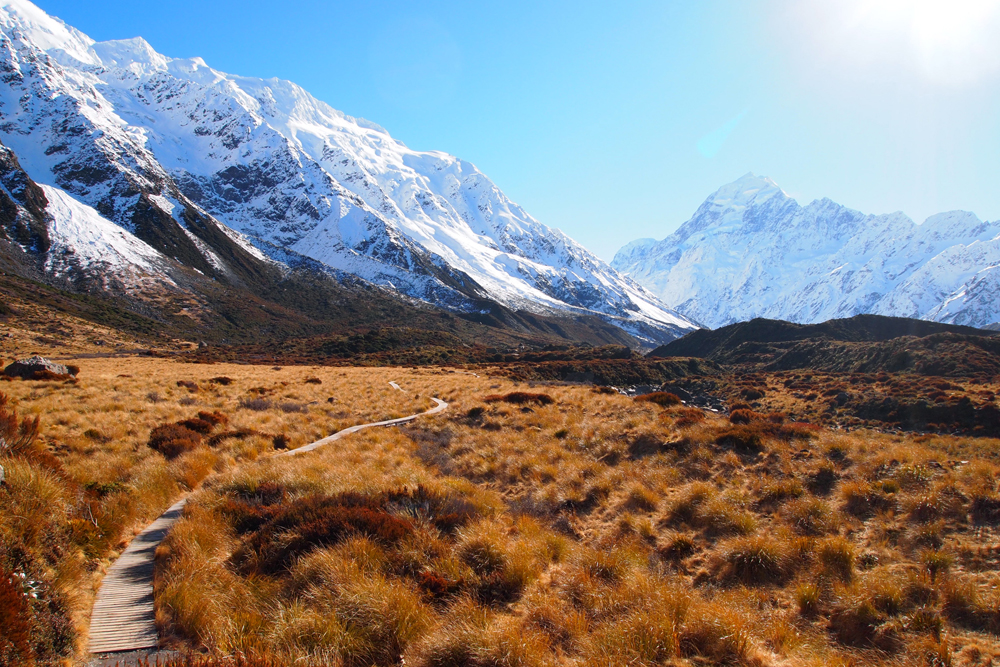
On a bluebird-blue day, crisp with bright sun, each blade of tussock grass emerges highlighted in detail. The trail twists between broad valleys carved by glaciers and ringed by steep walls. Only the gurgle of a stream and the distant rumble of avalanches break the cathedral-like silences.
A pilgrimage to Mount Aoraki (also known as Mount Cook) feels holy and awe-inspring at times. With a top elevation of 12,316 feet (3,745 meters) this is the highest peak in New Zealand and the crown jewel of the Southern Alps.
Cast adrift from the supercontinent of Gondwanaland 85 millions years ago, New Zealand's north and south islands are just the tips of a larger continent called Zealandia, submerged beneath the Pacific. In the last 1.8 million years, volcanic eruptions and multiple ice ages have radically transformed the land into the almost magical landscapes we see today, including the Southern Alps: the backbone of the rugged South Island.
Mount Aspiring
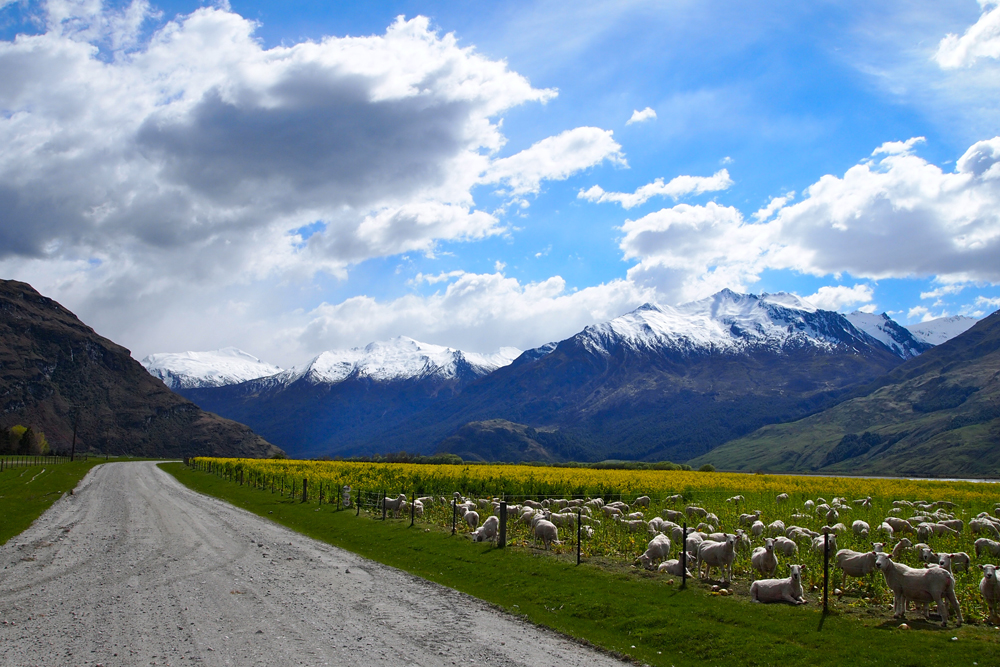
Like a pastoral landscape painting, golden fields flecked with sheep lead the way to Mount Aspiring. As clouds race overhead, sunshine gives way to shadow as we rattle onward. The air temperature plummets, and soon hail begins to patter on the windshield.
Exposed and buffeted by multiple weather systems, those visiting the mountains should prepare to pack for four seasons in one day. Weather across all of New Zealand is often moody and unpredictable at best.
Similarly, the land itself can be unpredictable. Squeezed between two moving sections of the Earth's crust that are pushing against one another, New Zealand bestows natural hazards as part of life. Major earthquakes frequently rattle the South Island, while volcanic eruptions are a real concern on the North Island. The same forces that have shaped the land so beautifully are also those that can destroy so violently.
The forest primeval
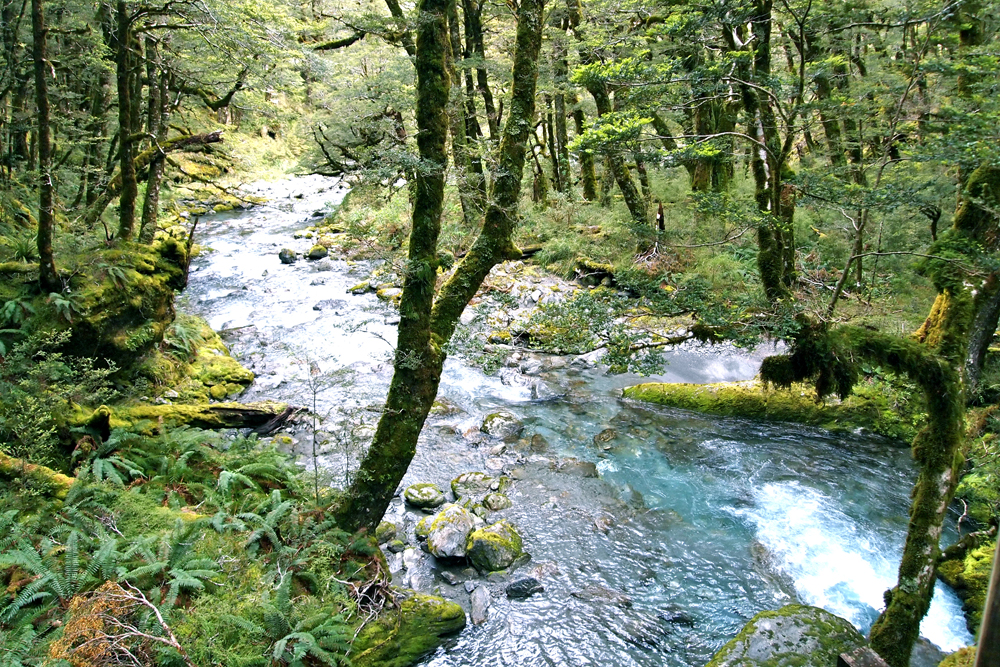
Rambling through fern gullies and mossy groves of southern beech trees, this forest feels enchanted and primeval. Water is everywhere: trickling over boulders, dripping from leaves, even seeping into my boots. But I hike on; the water is what makes this place so lush and beautiful.
In New Zealand, the wind comes mainly from the west, bringing rain, and lots of it. As moisture laden clouds from the Tasman Sea run into the Southern Alps, the cooler temperatures cause the air to condense as it rises up the mountains, releasing rain. Western regions, like this forest near Haast Pass, are among the wettest in the country.
This dense, dark "bush" once covered much of New Zealand. Though it was nearly impenetrable to early human explorers, New Zealand's native forests are alive with birds, insects, and lizards. Today much of the native forests have been cleared, but those tracts that remain are treasured for their beauty and as habitat for some of the world's most unusual species.
The solace of open space
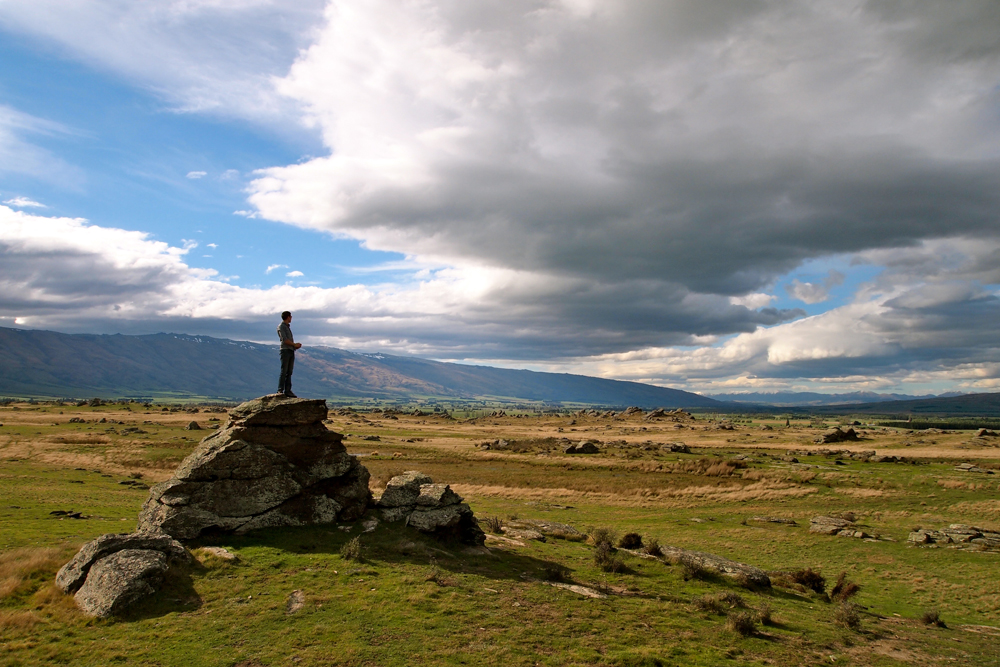
I marvel at the folds and indentations of the hills, as if the land was shaved raw and close by a razor. Here in Central Otago the land is craggy and pockmarked by rock and tussock. Open ranges and giant stones litter the ground like a giant's marble game.
Between isolated ranges with names like the Old Man Range and the Rock and Pillar, small bygone gold rush towns from the mid-1800's populate the map between the Southern Alps and the East Coast. The solace of open space and the weight of history take the breath away and capture the imagination.
This scene could be the Great Plains or the African Savanna after all. Instead of bison or wildebeest though, giant birds once lumbered over this landscape. The now extinct flightless moa, the largest of which grew to 11 feet (3.5 m) tall and weighed over 440 pounds (200 kilograms), browsed open grasslands like this one much as cattle and sheep do today. Dig a little and you just might find old moa bones or even gold.
Stillness
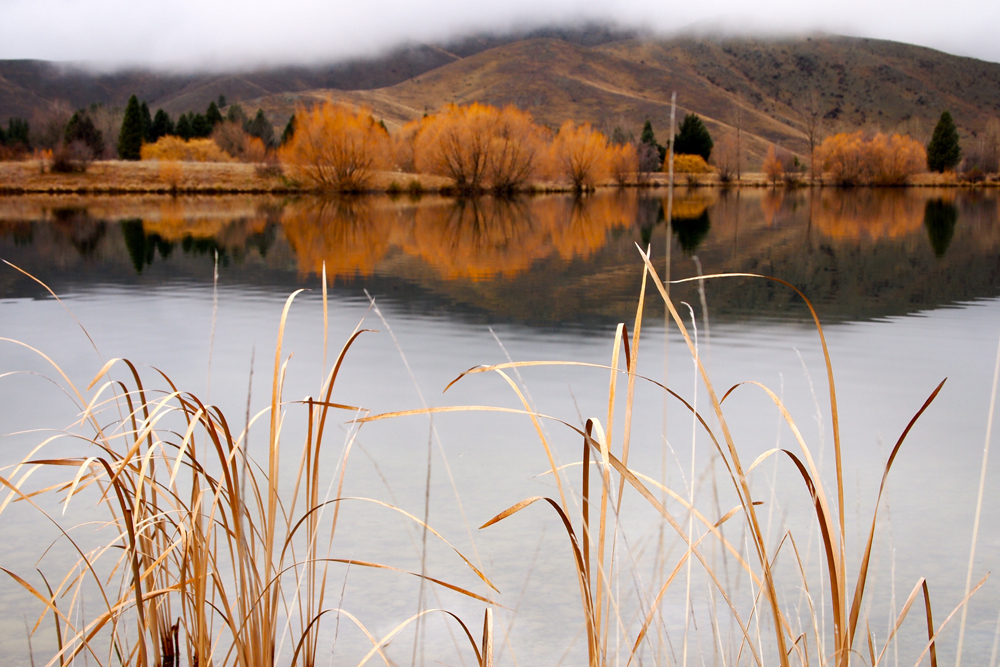
Low, misty clouds wrap around the hills like a blanket. River reeds murmur in the faintest breeze. Still waters gather expectantly in lakes and valleys as I make my way slowly from the high plains towards the coast.
Lakes abound in New Zealand, silent and deep. Indeed, New Zealand is a land of lakes, with more than 775 that are at least a half kilometer (one third of a mile) long. Some are massive like Lake Taupo on the North Island. At 240 square miles (623 square kilometres) in area, it is roughly the size of Singapore. Others are deep, like Lake Hauroko at the bottom of the South Island. At 1,515 feet (462 m) it is the 16th deepest lake in the world.
New Zealand lakes are habitat and home to many birds, such as ducks and herons, and fish, such as rainbow and brown trout that were introduced by European settlers. The kings of these still waters, though, are New Zealand's endemic longfin eels (Anguilla dieffenbachii). Found only in New Zealand, these eels are some of the world's largest, measuring up to 61 inches (155 centimeters) in length. They are also among the world's longest living eels, with records of some females living up to 106 years old!
Purakanui Falls
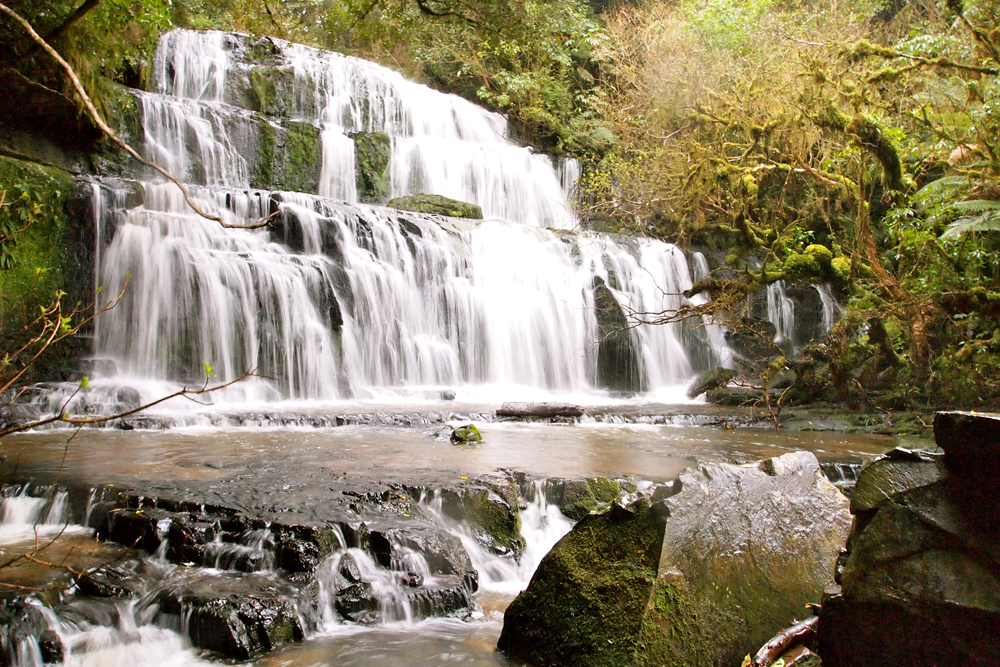
Amongst the misty spray and dull roar of Purakanui Falls, green algae festoon the slippery rocks. Steadying myself with a nearby branch, my hand wraps around a thick mat of mosses, ferns and orchids. Tangled roots and tree limbs grope in every direction, hemming me in, while in the pools at my feet small fishes dart among the rocks.
Rivers are life, and for a small country New Zealand has a lot of rivers. Indeed, the total length of the country's rivers is more than 111,847 miles (180,000 km). The longest river is the Waikato at 265 mi (425 km), running through the heart of the North Island. More than 40 species of native fish and many other types of animals call these rivers home.
With canoes and rafts, early Maori explorers used rivers like highways to gather food and harvest pounamou, or greenstone, for trade. Later, European explorers used rivers to access the rugged interior, searching for gold, for new places to settle, for opportunities and a new life.
Sign up for the Live Science daily newsletter now
Get the world’s most fascinating discoveries delivered straight to your inbox.
In Gondwanaland
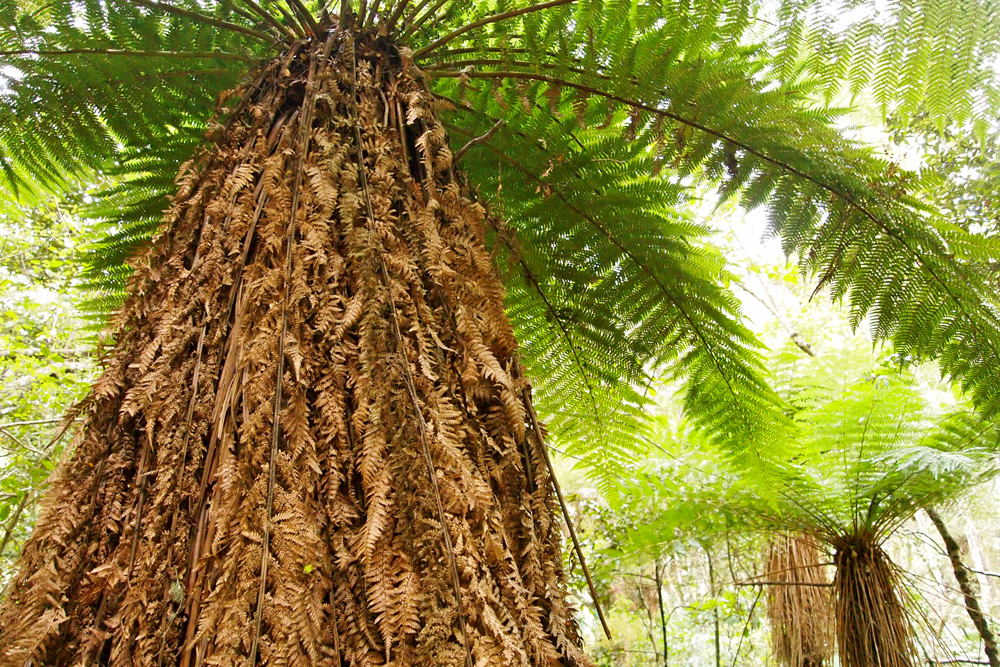
I feel like a little person, you could even say a Hobbit, dwarfed by giant tree ferns. It is as though I've walked straight into the Jurrassic period. Where are the dinosaurs? Forget Middle Earth, sometimes New Zealand feels like pre-historic Earth.
Broken off from the supercontinent of Gondwana more than 85 million years ago, New Zealand drifted in the seas of geologic time. As it drifted it carried a cargo of primitive plants and animals from Gondwana, like cycads and tree ferns.
Isolated from other lands by the sea, new creatures colonized the land over time, but only those able to fly or drift over. Because of the formidable ocean barrier, there are almost no native mammals in New Zealand. Over time, evolution shaped the creatures that did arrive in unusual ways. Flightless birds like the iconic kiwi and giant moas filled the roles mammals play elsewhere. While the now extinct Haast Eagle, the world's largest eagle at 22-33 pound (10-15 kg), once hunted them. With few predators, many birds did not need to be able to fly.
Beautiful harbor
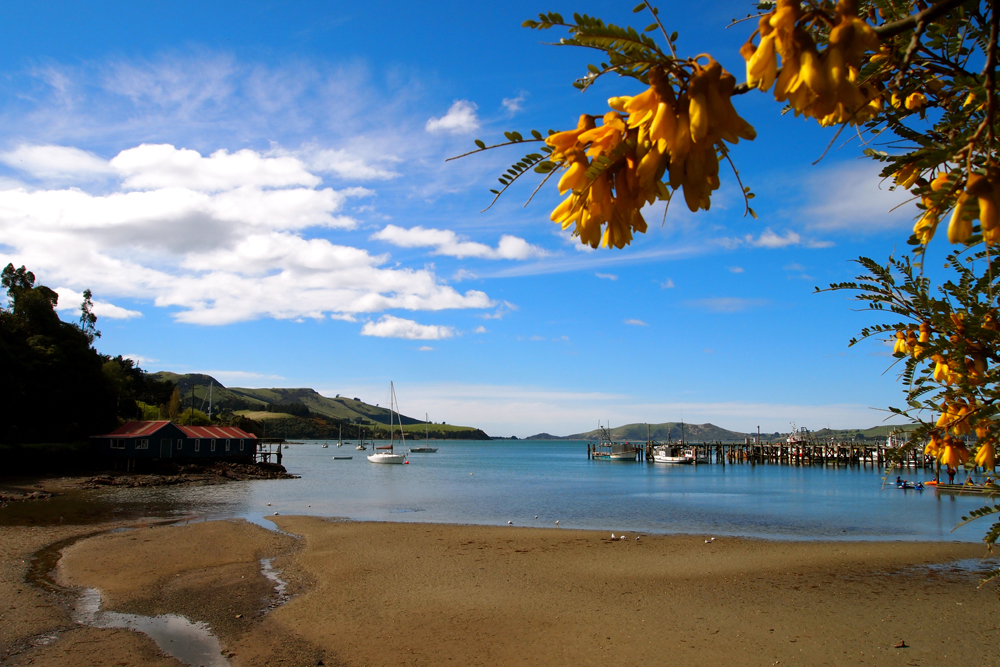
The tides are strong along the Otago Peninsula, rising and sinking several meters each day. Listening to the cries of oystercatchers and watching the waning tide rush out, seaweeds, red periwinkles, cat's eye snails and mussels lie exposed on the rocks. Masses of yellow k?whai flowers, New Zealand's national flower, frame a beautiful harbor.
The sea both separates New Zealand and brings the world closer to it. This was the last major landmass on planet Earth to be discovered and colonized by people. When Polynesian explorers first set eyes on this land around 1250 A.D., it must have seemed like a mythical place, with its dense forests, long rocky coastlines, impenetrable mountains and enormous flightless birds.
With the arrival of Polynesian explorers, New Zealand's long isolation was forever shattered. Within 200 years of landfall, the moa had been hunted to extinction. In the 19th century, many other native bird species were killed by rats, cats, stoats and other predators that came with the first European settlers. Today, some native species cling to life only in reserves: the last descendents of Gondwanaland.
Aotearoa
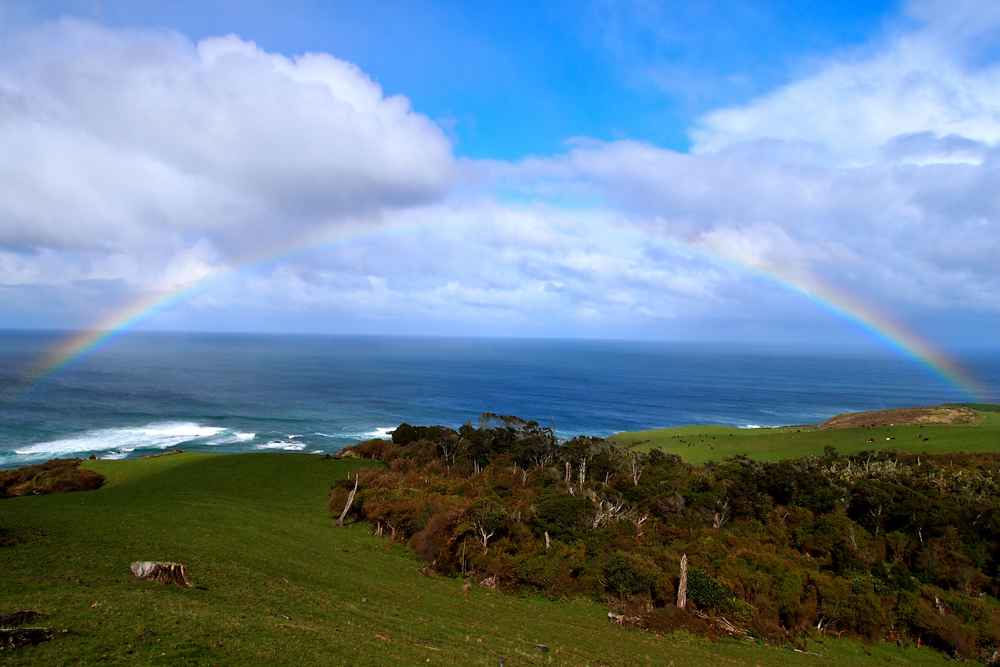
In a Maori legend the demigod Maui pulled up a huge fish from the sea, which became the North Island. His canoe became the South Island, and its anchor Steward Island together, the three main islands of New Zealand or Aoteraoa in Maori, meaning "the land of the long white cloud."
The land of the long white cloud is a land of contrasts. Volcanoes and glaciers, forests, beaches and open plains run the length and breadth of this country. Plants and animals, both ancient natives and new arrivals, juxtapose evolutionary past with present. The culture of Polynesia meets that of the British Isles, blending into something different and utterly new.
Here it is possible to see sheep dotting the same green hillsides where penguins come ashore to nest; to experience four seasons and four landscapes in one day; to walk through a fantasy land come to life and feel small beside the immensity of nature. In New Zealand it is possible to find your own Middle Earth at the bottom of the Earth.
Follow OurAmazingPlanet for the latest in Earth science and exploration news on Twitter @OAPlanet. We're also on Facebook & Google+.










